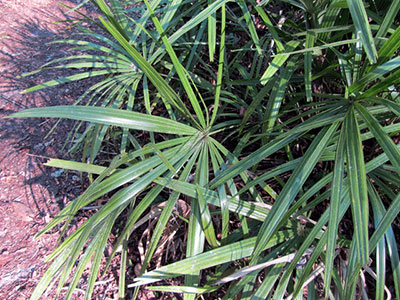Needle Palm
Needle palm is a native plant that can work well in home landscapes throughout Florida. Its lustrous, evergreen leaves make it a great accent plant and help it add good textural interest beneath new or established trees.
Characteristics
Needle palm is a slow-growing, shrubby palm that will eventually grow into a clump that is eight feet tall and eight feet wide. Its common name comes from the sharp, black needles found along its trunk.
The palm is especially prized among cold-climate gardeners who want a tropical look, since it can tolerate temperatures several degrees below 0°F. Unprotected specimens are known to grow as far north as Washington D.C. and New York City.
Known scientifically as Rhapidophyllum hystrix, needle palm is native to coastal areas of the Southeast from South Carolina to Florida and Mississippi.
Planting and Care
Choose an area that will allow the palm room to grow and that will be far enough from walkways and children's play areas so that the sharp needles will not become a nuisance.
Needle palm is a versatile plant that will grow in both sunny and shady locations, though it will perform best if given some shade. It can tolerate a range of soils from wet to dry.
The best time to transplant most palms is in spring or summer, when soil temperatures are warmer. Be sure to plant the palm no deeper than it was originally growing, or else it may be slow to produce new growth.
Needle palm will benefit from regular waterings at first, but will be very drought tolerant once established. After establishment, a palm-specific fertilizer containing additional magnesium and a micronutrient amendment can be applied at twice a year to encourage faster growth.
The plant is endangered in the wild, so take care to buy only from reputable dealers who raise the plants in a nursery setting.
For more information on needle palm, contact your county Extension office.


